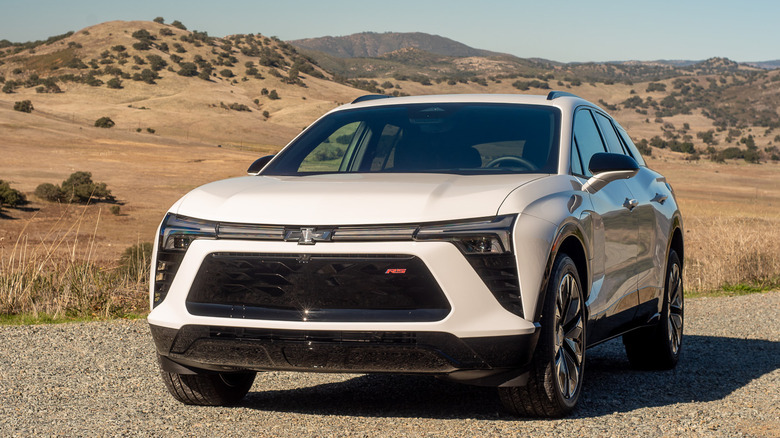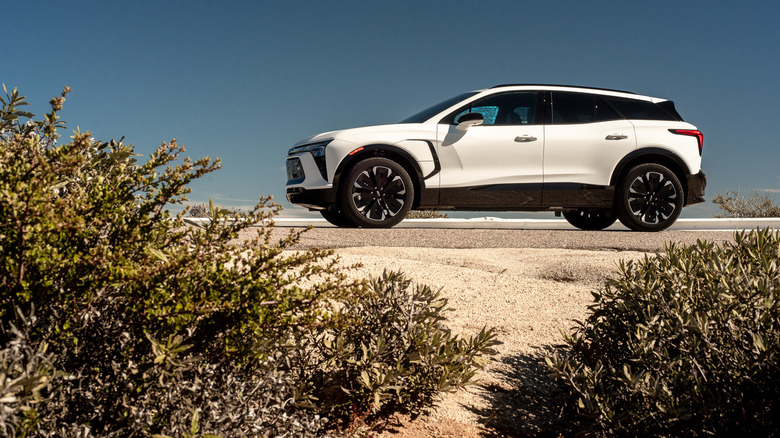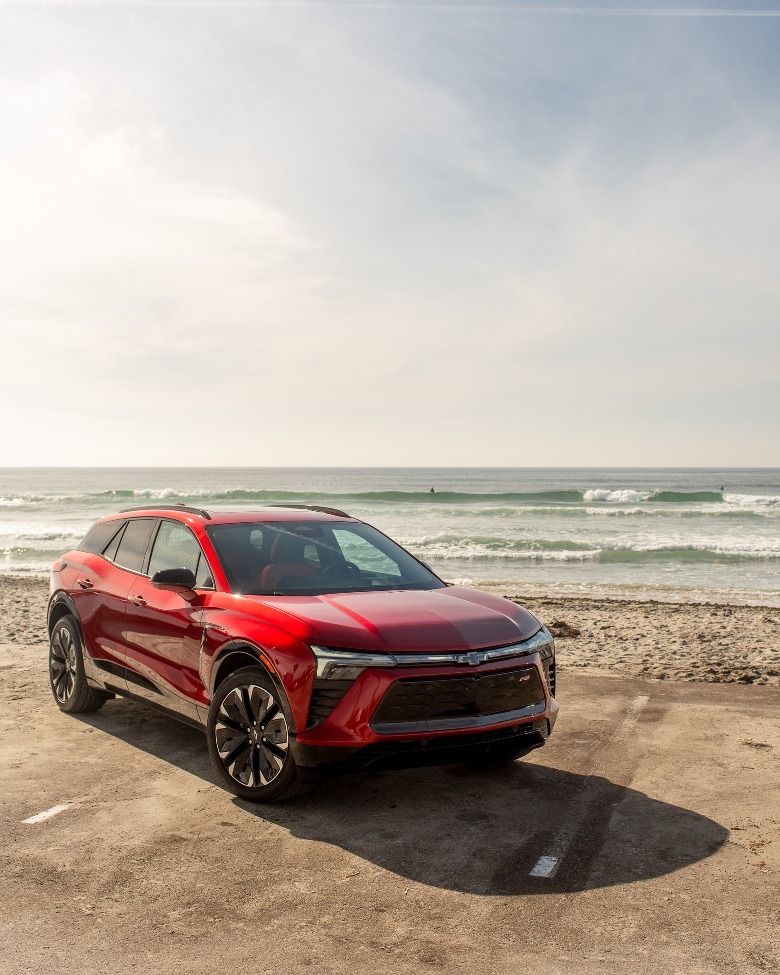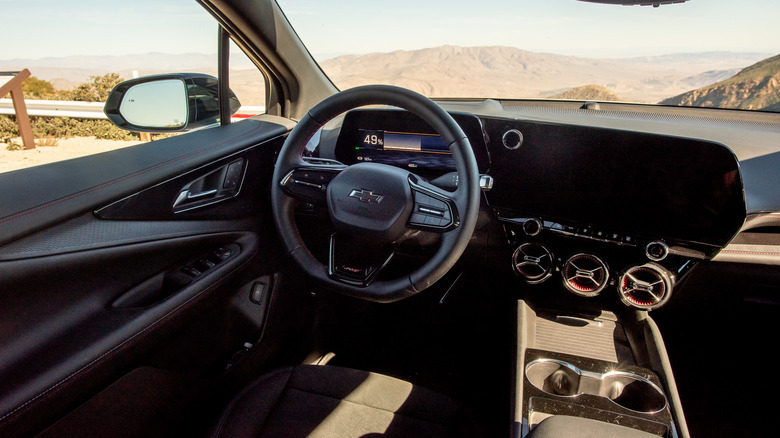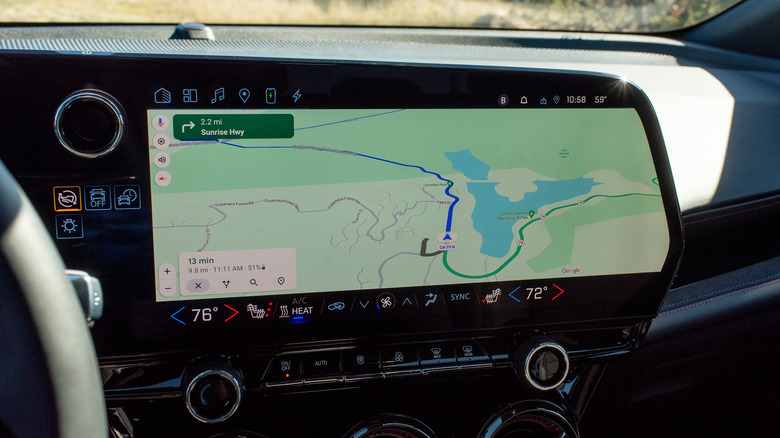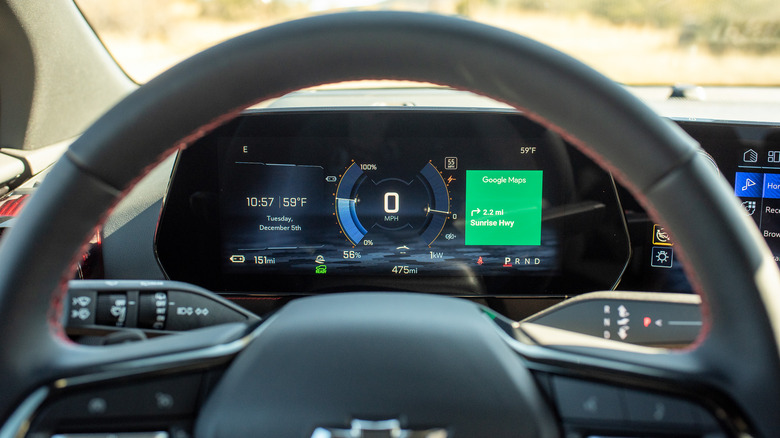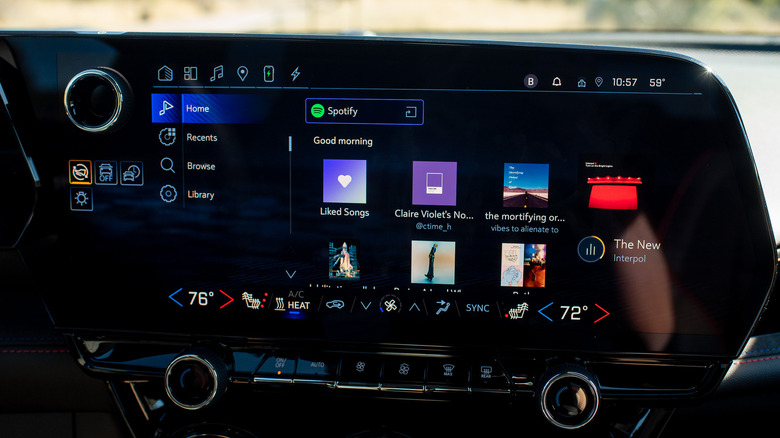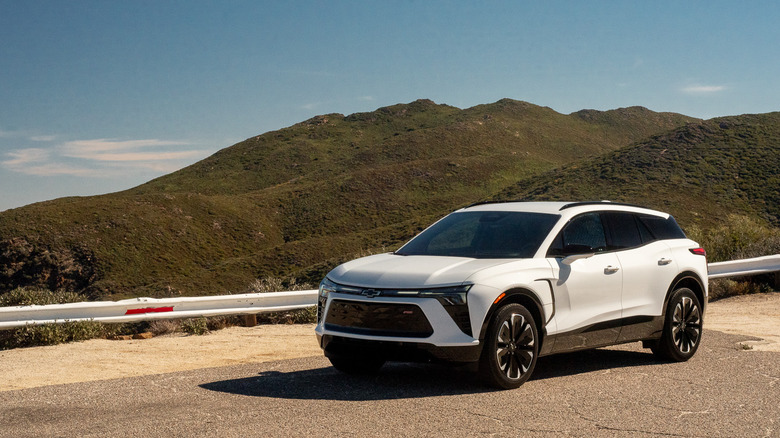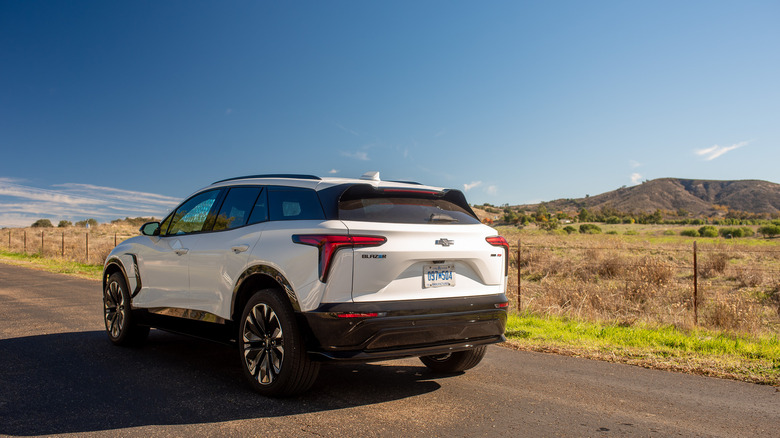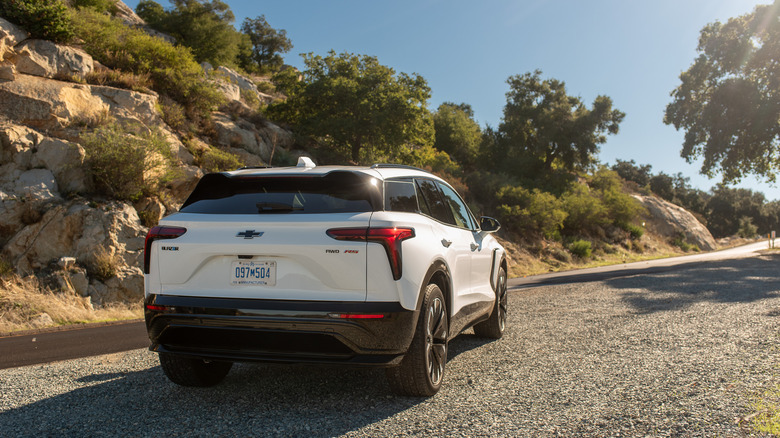2024 Chevrolet Blazer EV First Drive: Electrifying Normalcy
When Warren Harding ran for president in 1920, fresh on the heels of Woodrow Wilson's quasi-totalitarian administration and the nearly decade-long global upheaval of the first World War, he coined a new phrase for the aims of his campaign: "a return to normalcy". The idea of calming the country and settling down from the tumultuous teens was a popular one; Harding handily won the election with over 60% of the vote.
In the ever-crowded and increasingly-complicated EV market, the 2024 Chevrolet Blazer EV feels like it can be best described by Harding's campaign slogan. Where other manufacturers tout the novelties of electrification with crab-walking behemoths or reinvented steering wheels, the Blazer EV seems like a rock-solid traditional SUV that happens to be powered by batteries. The question left to answer is: are EV buyers actually ready for a return to normalcy?
Asphalt Meadows
The Chevrolet Blazer EV isn't General Motors' first rodeo with EVs—far from it—but it might just be the one with the most different drivetrains offered in a single model. The Blazer EV is offered in front-, rear-, and all-wheel-drive; these configurations are available in four drivetrain permutations of Ultium motors (with four different power outputs) and two different battery sizes across three trims (LT, RS, SS). It's dizzying, admittedly, but the base drivetrain will be front-wheel-drive in the LT trim. That drivetrain isn't available until later next year, however, and Chevrolet hasn't released range or horsepower numbers for it yet. The range will be topped with the all-wheel-drive, twin-permanent-magnet motor, 557-horsepower SS trim, although that also won't be available until later next year.
What will be available immediately at the Blazer EV's launch are the all-wheel-drive LT, and the rear- and all-wheel-drive versions of the mid-trim RS. The all-wheel-drive LT will be the cheapest Blazer EV at its debut, with an MSRP of $56,715 after destination fees. This LT and the RS all-wheel-drive ($60,215) get the same underpinnings: an 85-kWh battery pack and two motors that combined deliver 288 horsepower and 333 pound-feet of torque. The most expensive ($61,790) RS rear-wheel-drive model boasts a massive 102 kWh battery pack and a single rear motor that delivers 340 horsepower and 325 pound-feet of torque. This version also has the most range, with an EPA-estimated 324 miles; the EPA says the all-wheel-drive Blazer EVs will deliver 279 miles on a full charge.
Chevrolet has ensured there will be a configuration of Blazer EV that suits every potential buyer that even thinks about one; the budget-minded and power-hungry will just have to wait until later in 2024 for their ideal versions.
Passenger Seat
Once I'd wrapped my head around the array of choices available, I headed toward the two Blazer EVs Chevrolet gave me to test in San Diego: the RS all-wheel-drive and RS rear-wheel-drive. All Blazer EVs get the exact same centerpiece tech loadout, regardless of trim or drivetrain: a massive 17.7-inch infotainment touchscreen paired to an 11-inch digital gauge cluster, supplemented with a healthy array of physical switches and dials.
The widescreen expanse runs the latest iteration of Chevrolet's Android Automotive-based infotainment software and features Google Built-In integration, as well as Amazon Alexa integration. Notably absent, however, are Apple CarPlay and Android Auto, a regression from Chevrolet's previous EV, the Bolt.
Rand McNally
The absence is somewhat softened by software, specifically the functionality provided by Google Built-In. The Chevrolet UI is relatively easy to navigate for common functionality, and climate controls—as well as single-touch buttons for headlights and one-pedal-driving—are always displayed, regardless of what else is on the touchscreen.
Navigation is a specific strong suit, thanks to the Blazer EV's integration of vehicle telematics with Google Maps. When entering a destination in the Blazer EV's Google Maps navigation system, the expected remaining charge upon arrival is estimated. (As you drive your Blazer EV more, it'll take into account your typical driving style and modify these range estimates based on your lead-footedness, too.) If Maps projects that juice will be needed en-route, it will automatically plan stops at charging stations along the way and bake the time needed to recharge into the total trip time estimate. It's almost good enough to make me not miss my iPhone's CarPlay, except...
Title and Registration
There were a decent number of gaps in the system, mostly those related to Google Built-In. The software is clearly still going through teething pains, with my first test car's infotainment completely crashing before I'd even hit the road; at least one other journalist's touchscreen locked them out of both headlight and seat heat/ventilation controls during the test drive. Our vehicles were still pre-production models, so I would expect that delivered models won't suffer from this, but it was still frustrating since the removal of Android Auto and Apple CarPlay were ostensibly to smooth the development process.
And even disregarding bugs, it was still less-than-ideal. During my drive, Spotify repeatedly cut out as I lost signal; the app buffers minimally and a short interruption in cell service is enough to end your jam. You can't solve this by downloading local copies of your playlists to your car, either; some music apps will allow you to do this, but not Spotify's in-vehicle app. Like all Play Store apps, this is developed by the company in question—in this case, Spotify—not Chevrolet, so while changes may come via an over-the-air update sometime in the future, that functionality is completely out of GM's hands.
Ba Ba (This Is The Sound of Settling)
Now, my Spotify frustration could be circumvented by connecting my phone to the Blazer via Bluetooth, and then controlling my music via the Spotify app on my phone (which has my local music files), but then we're back to the pre-CarPlay era of infotainment systems. Account for the fact you'll be required to do this for Apple Music—as the Play Store unsurprisingly has no Apple apps—and it feels like stepping back in time to a much more frustrating, haphazard era of infotainment.
On top of all of this, while Google Built-In integrates neatly with the rest of the Google ecosystem, if you're currently attempting to move away from a life controlled by Google (which I am), the Built-In will simply give you yet another profile to attempt to sync with the rest of your digital life. It also means that location data is in the hands of not just General Motors, but Google as well, which has a less-than-stellar history with data privacy. While for some the Blazer EV's infotainment will be almost a seamless affair, for many, it could pose a headache—and it eliminates one of GM's greatest draws over the CarPlay/Android Auto-lacking Teslas.
When We Drive
Once I'd finally gotten my infotainment situated and headed inland towards the mountains, I found the Blazer EV much more pleasant. The all-wheel-drive RS is sufficiently quick for normal driving, and its 333 pound-feet are delivered with a relatively rolling torque curve, so it forgoes most of the neck-snapping instant acceleration of some EVs. Ride quality strikes a nice balance between compliance and precision, with the lengthy 121.8-inch wheelbase naturally soaking up most pavement imperfections.
True one-pedal driving was possible and easy, as the Blazer EV's regenerative braking is remarkably strong at its highest setting (this strength is customizable with an always-available icon on the infotainment screen). Needing the physical pad-on-rotor brakes was a rarity for me, but when I did need them, it was a relatively smooth transition with only a slight difference in pedal feel. Steering is relatively typical for a laid-back SUV—slightly progressive weighting through a turn without much feel, but without a complete lack of communication, either. With one-pedal driving switched off, all of this makes the Blazer EV drives more like a traditional ICE SUV than many of its competitors, which I think many new-to-EV-life buyers will appreciate.
Little Wanderers
The cabin was comfortable, although definitely built for someone broader and heftier than me. The seats were on the firm side, with extremely wide bolsters; the whole cabin felt extremely roomy. This is because it is. Front occupants get 58.7 inches of shoulder room (an inch more than the Kia EV6) and 40.9 inches of head room (over two inches more than the Mustang Mach-E). Chevy's standard suite of driver-assistance features, including lane-keep assist, were unobtrusive and kept my cruise around Mt. Palomar relaxed.
The downside of a driving experience this sedate is that it felt jarring when juxtaposed with the Blazer EV's design. The cabin of the mid-trim RS model heavily implied sportiness, with red stitching, red-trimmed air vents, and frankly tacky-looking semi-translucent red plastic trim. Switching the Blazer EV into "Sport" mode, however, did little to make it sporty. The mode change slightly improved motor response under 40 mph, made the steering slightly weightier, and pumped in one of the most annoying fake-motor whines I have ever heard in any EV soundscape, but it did not make it more exciting.
Normal Cab For Cutie
The lack of sportiness isn't a deal-breaker for me, however, and it likely won't be for many others: assuming Chevy squeezes out the bugs, the Blazer EV does a solid job at being a normal electric SUV, especially for broad-shouldered buyers. The bigger issue for many will likely be price. At $56K, virtually every comparable all-wheel-drive EV SUV in its class starts for less, sometimes eye-wateringly so: a dual-motor Tesla Model Y Long Range—that has over 50 more miles of EPA-rated range—is currently around $6,000 less.
For performance, meanwhile, the Blazer RS is handily outperformed by competitors, as well, with the Ford Mustang Mach E GT delivering almost 200 more horsepower and virtually the same range for around $1,500 more. While the Blazer EV SS promises much more power, its pricing is still unannounced, and it will likely be more expensive than most competitors. Whether EV shoppers turn out for the Blazer EV as strong as they did for Harding in 1920 will depend on how much normalcy is really worth to them.
